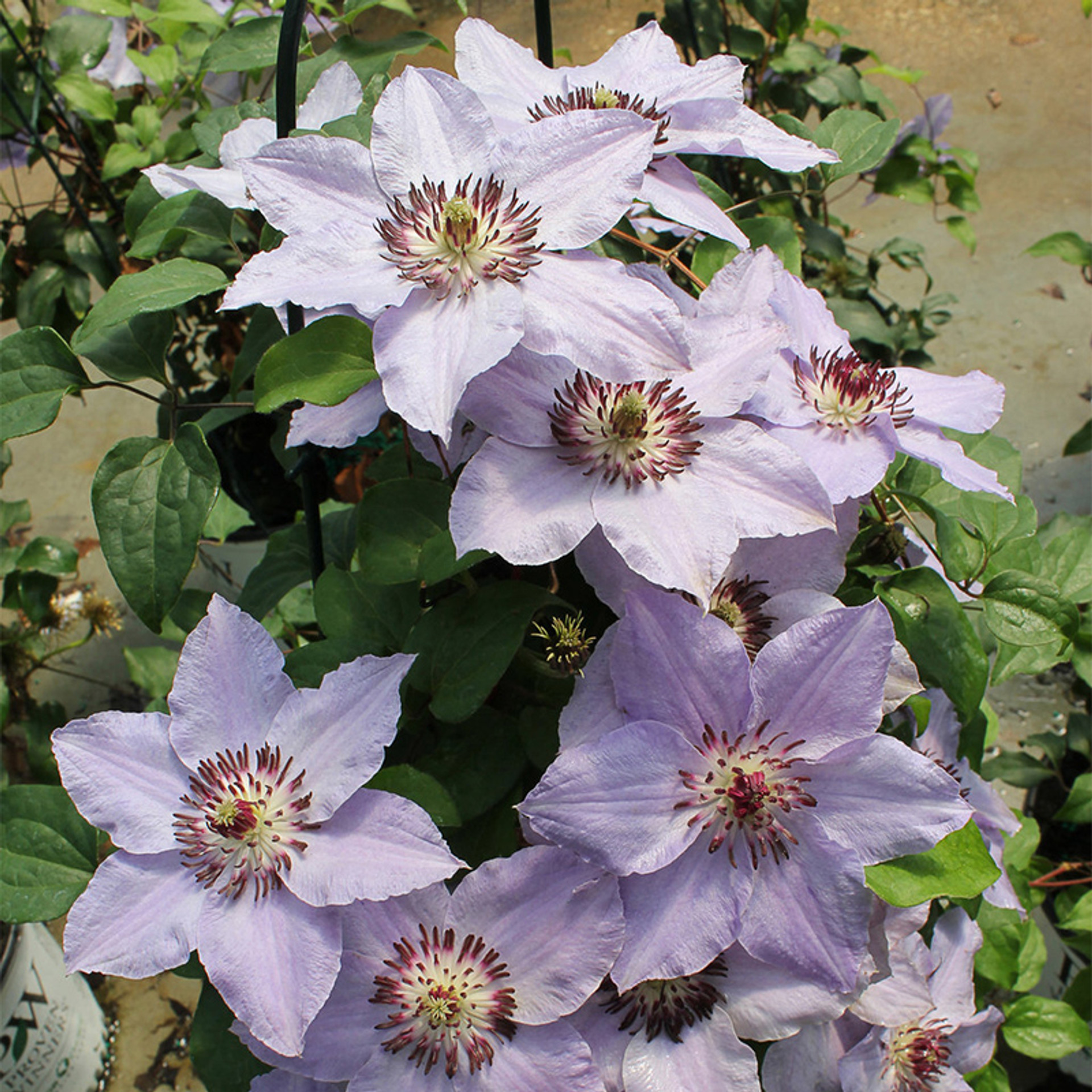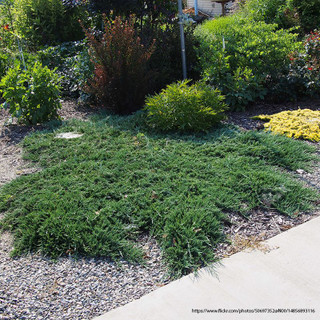
Clematis
Shop Clematis By Pruning Group
Why Buy Clematis Online
Clematis (pronounced KLEM-ə-tis) is a genus of 300 species native to China, Japan, North America, and Europe. Most clematis are flowering vines, however there are newer varieties now available that are small flowering shrubs. The flowers can be white, purple, pink, lilac and blue. The plants bloom from spring all the way through fall. Some varieties have very fragrant blooms as well.
Very popular flowering vine
White, purple, pink, lilac & blue flowers
Can grow to be over 15 feet tall
Growing zones 3 to 9
Landscaping Tip: Get the look of a lush, vertical garden without all of the maintenance and work! Climbing plants offer the chance to cover walls, fences, pergolas, arbors, railings, and trees with beautiful living color.
About Clematis

Leatherflower
North America, Europe, and Asia
Perennials
Deciduous or Evergreen Vine (depending on species)
4-11
Blue, Purple, Pink, Red, White, Yellow
Spring, Summer, Fall
Climbing, Spreading, Upright
Bees, Butterflies, Hummingbirds
Drought (once established)
Deer, Pests
How To Use Clematis In The Garden
Clematis offers a unique combination of climbing ability and breathtaking blooms that make it a standout choice for gardeners. Its varieties range from small-flowered species to large, showy hybrids, allowing for year-round interest depending on the type. These plants are known for their adaptability, growing in sun or partial shade, with roots preferring a cool, moist environment. With proper care and pruning tailored to the specific variety, clematis can provide a long-lasting display of color and texture.
Climbing clematis varieties can grow to over 15 feet tall can be trained to climb trellises, pergolas, and fences, adding vertical interest and transforming bare structures into living focal points. It’s also effective when allowed to sprawl over shrubs, trees, or rock walls for a more natural look. Low-growing varieties can serve as ground cover, while compact types thrive in containers, making clematis suitable for even small spaces.
Types of Clematis
| Type (Group) | Bloom Time | Habit | Pruning | Examples | Features |
|---|---|---|---|---|---|
| Group 1 (Type 1) Early-Flowering |
Late winter to spring | Woody climbers blooming on old wood from previous season’s growth | Minimal or none required. Remove only damaged or wayward stems after flowering, if needed. |
- C. alpina - C. macropetala - C. armandii - C. montana - ‘Freda’ |
- Earliest bloomers - Often bell- or saucer-shaped flowers - Very little pruning needed |
| Group 2 (Type 2) Large-Flowered/Repeat Bloomers |
Late spring–early summer (first flush) and often a second flush in late summer | Vining climbers that form some flowers on old wood and some on new wood, producing showy blooms | Light pruning in late winter/early spring to remove weak or dead stems. After first flush, trim back to a strong pair of buds to encourage rebloom. |
- ‘Nelly Moser’ - ‘Henryi’ - ‘Niobe’ - ‘Crystal Fountain’ - ‘Duchess of Edinburgh’ - ‘Mrs. Cholmondeley’ |
- Show-stopping large flowers - Often rebloom - Requires moderate pruning for best displays |
| Group 3 (Type 3) Late-Flowering |
Summer to fall | Vigorous climbers or scrambling herbaceous forms, blooming on new wood | Hard prune in late winter or early spring to roughly 1–3 ft from the ground (remove old growth entirely) |
- C. viticella - C. tangutica - C. texensis - C. x jackmanii - ‘Duchess of Albany’ - ‘Polish Spirit’ |
- Flowers on current season’s stems - Long blooming period - Includes bell-shaped, tubular, and open flowers |
Clematis Care
Clematis prefers well-draining soil rich in organic matter, with a slightly neutral to alkaline pH. Plant the root crown slightly below soil level, allowing for strong growth and resistance to clematis wilt. Water consistently, especially during dry periods, but avoid oversaturating the roots. A sunny location with at least six hours of light daily is ideal, though partial shade can work for some varieties. Apply a balanced, slow-release fertilizer in spring to support healthy foliage and blooms.
Regular pruning is essential and depends on the plant’s flowering type—whether it blooms on old wood, new wood, or both. Protect the roots during winter with a layer of mulch, particularly in colder climates. Clematis grows well in containers with proper drainage and a large pot to accommodate the root system. Consider adding a trellis or support structure to guide growth in confined spaces while maintaining proper airflow.
Learn More About Clematis Care

Clematis Companion Plants
Contrary to popular belief, you do not need to grow plants to shade the base of clematis. It is best to allow the vines ample space to grow. If you are concerned about the roots, you can apply a thick layer of mulch on top to help protect the roots and retain moisture. There are several great shrubs, perennials and annuals that go well with clematis. Some of our favorite plants are roses, juniper, coneflowers, larkspur, ornamental grasses and shade loving vegetable plants. Clematis can grow up the branches and stems of rose or juniper bushes for a unique look and a flower assortment most of the growing season! You can choose a plant that has similar flower colors as the clematis, or something that blooms at a different time of the year to extend the bloom season of your space.













































